Every parent naturally desires that his/her newborn baby should be healthy, chubby and intelligent. To enjoy good fruits one has to plan and work hard. For planning, both the parents must have sound knowledge about the normal newborn baby and infant care in general. The parents with sound knowledge only can manage the newborn baby tactfully and with confidence. This article provides answers to frequently asked questions about newborn baby.
1. Why do some babies cry for hours together in the evening without any reason ?
About 5 to 10% babies start crying in the evening and keep on crying for 2 to 3 hours till they get exhausted. The episode repeats every day for a period of 2 to 3 months and later gradually subsides of its own. These spells are known as ‘evening colic’ or ‘3 month’s colic’. Occasionally, the crying episode may occur at any time of the day or night. The severity may vary from irritable and cranky nature to intense uncontrolled crying.
The usual causes which initiate the crying spell are hunger, colicky pain, feeling too warm or chilly or getting bored while lying alone. These causes vary from baby to baby and in the same baby from time to time.
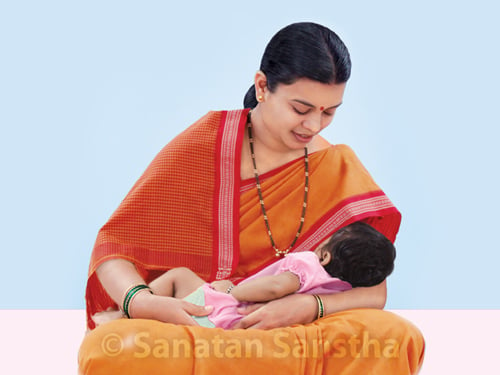
During the crying spell, temporary relief may be obtained by following :
- Feeding the baby
- Fomentation to the tummy
- Gently tapping the back so that the baby belches
- Putting the baby in the cradle and rocking it
- Putting the baby in prone position
- Passing a rectal suppository so that the bowels are cleared.
However the beneficial effects are usually temporary and often last for 5 to 20 minutes only.
Evening colic is more common in tense and high strung babies. Emotional immaturity is the main cause. Every baby may start crying if it is not offered milk quickly when hungry. However, once the baby is upset and starts crying, it is not able to control its anger. Thus a hungry baby may not get pacified even when offered milk, once the crying episode starts. These episodes are more common in the evening as the mind is tired by evening after getting exposed to the various environmental stimuli during the day. In the morning the mind is comparatively fresh. As the baby grows older, the baby exercises better control over its anger with the increasing maturity of the brain. The baby also probably learns that except getting exhausted there is no real gain by crying. Giving a sedative about an hour before the expected time of crying for 15 days to 1 month usually breaks the cycle of crying. Crying becomes gradually less frequent and less severe with the advancing age.
2. What makes a crying baby quiet when it is lifted and carried against the chest ?
A crying baby lying on the bed is in need of help, love and emotional security. Such a baby feels much more secure and comfortable when it is lifted and carried gently. Warmth and gentle touch of the mother act as soothing agents. If the baby’s ear lies in close apposition with the mother’s breast, the baby is able to hear rhythmic heart sounds of the mother. The baby enjoys listening to the heart beats as it is used to this rhythmic music when it lay in the mother’s womb. Even the older child who is frightened rushes to the mother and is comfortable only when he or she is lifted and carried by the mother.
3. Should we pick up the baby every time it cries ?
Some parents are worried that they will spoil the baby if they pick up the baby every time she cries. This is an unnecessary fear. The baby’s cry is a call for help and you must immediately find out the cause of crying and make the baby comfortable as soon as possible. Otherwise the crying baby is likely to develop emotional problems later. Some parents are too busy with their own affairs and pay attention to the baby only when she cries. They must talk and play with the baby when she is awake. Otherwise the baby is left with no other means except crying to draw the attention of the parents.
4. Is it advisable to apply oil to the head and fontanel of a baby ?
The newborn baby’s skull does not consist of a single bone but is made up of flat bones covering the surface of the brain. The adjoining borders of every two flat bones are loosely joined together by sutures. A big diamond shaped gap between the bones of the head exists on the top of the head and is known as fontanel.
The brain continues to grow after birth and the maximum growth occurs in the first two years of life. If the skull bones were a single bone, the brain inside the head could not have grown fully. The fontanel and sutures allow the rapid growth of the brain in the first two years. The sutures remains open tiII the growth of the brain and of the skull bones is complete by 16 to 20 years of age.
There is no danger to the brain if one touches or even gently massages the fontanel because though the bone is absent a strong membrane covering the brain protects the brain. A light massage of the head has a soothing effect and is often useful in cases of headache and irritability in children. It is often used by mothers to induce sleep in the newborn baby at night. Application or very gentle massage of oil over fontanel has the same effect and is not harmful to the newborn baby. These are contraindicated if the skin of a baby’s head is infected with boils, dandruff etc. Oil application is of no use in cases with depressed fontanel, which is commonly seen in cases of diarrhoea with dehydration. Vigorous oil massage should be avoided.
5. What is a cradle cap ?
The cradle cap consists of the areas of skin with dried secretions and dead denuded cells which jointly appear like a cap over the head of the infant. The lesions on the head should not be scrapped but the baby’s head should be lightly rubbed with cotton or wool dipped in til (Sesame) or coconut oil. In the morning the head should be thoroughly washed and dried. In this case the doctor should be consulted.
6. How should the newborn baby be picked up ?
The newborn baby is very delicate and should be picked up very carefully. The baby should be wrapped in cloth first. It is essential to keep one palm under its neck and head and the other under the buttocks. Picking up the baby by lifting its hands or legs is risky as this may lead to dislocation of the joints.
7. In India why are the mother and the newborn baby traditionally considered untouchable in the first few weeks after delivery ?
The foetus in the womb lives in an atmosphere completely free from germs. Immediately after birth, the baby is exposed to disease producing germs present in the surroundings. As the newborn baby’s resistance to infection is very poor, we have to protect the baby from these germs by isolating the baby.
After delivery, the mother is exhausted and her general resistance is lowered. In addition, when the placenta separates from the womb, the womb is left with a big raw area in which the germs can easily settle. If the mother catches even an ordinary infection like cold and cough, it can be easily transferred to the newborn baby. Hence it is important to protect both the mother as well as the newborn baby from catching infection.
Our forefathers had labelled the newborn baby and the mother untouchable for some time thereby assuring that the feelings of the members of the society are not hurt and simultaneously achieving the target of isolating the mother as well as the baby and ensuring rest to the mother tactfully.
8. Why is jaundice so common in newborn babies ?
Approximately 50% of the newborns and 80% of the premature babies have visible jaundice in the first week of life. The jaundice appears on the 3rd day, is most intense on the 5th day and disappears between 8 to 10 days. In premature babies, the jaundice may take two weeks to disappear. This jaundice is known as physiological jaundice as it is not caused by any disease process.
Normally the red cells in blood die after about 120 days. The dead cells are replaced by new cells manufactured in the bone marrow. The red pigment in the red blood cells is converted into a yellow pigment (immature bile pigment). This yellow pigment in the blood is picked up by liver cells and converted into a mature bile pigment which is carried through bile into the small intestine. In the newborn baby, the red blood cells are normally destroyed at a faster rate. This increases work load on the liver. At this stage the liver is quite immature and has no capacity to handle this load. Hence the immature bile pigment which is yellowish in colour accumulates in blood and tissues giving rise to visible jaundice. Thus both excessive destruction of red blood cells and immaturity of liver are responsible for the physiological jaundice seen in newborn babies. Normally, the level of bile pigment in the blood is less than 1mg%. In physiological jaundice, these levels can rise up to 2 to 10 mg% per 100ml of blood.
9. What is the fate of umbilical cord after birth ?
The umbilical cord which is fleshy, moist and bluish in colour, slowly shrivels and is usually shed by the sixth day. However, it may get detached any time between the 4th and 21st day after birth. After the cord falls off, the raw surface should be cleaned daily with spirit and followed by the application of boric powder or sprinkling of an antibacterial dusting powder over it. The base of the umbilical stump heals by about a week and is followed by the formation of a scar. During healing, the cord shrinks and carries the skin along with it resulting in a depressed navel. If the skin grows much faster and remains loose, it remains flush with the surface or protrudes outwards. These are normal variations and should not cause anxiety.
10. Why do some people tie the umbilical cord with a string around the child’s neck ?
When the umbilical cord is cut, the open end of the stump is a raw area. This area can get infected with urine and stools of the newborn baby. This umbilical stump is tied with a sterile string and the string is tied around the child’s neck so that the raw area of the stump is directed towards head and the chances of infection are minimized.
11. Is it advisable to apply kajal (Collyrium, soot) to the eyes of an infant ?
Freshly prepared kajal itself does not give rise to the infection of an eye. However, if the fingers used to apply kajal are dirty, they can introduce infection into the eye. If nails are long, they can damage the conjunctiva of the eye. Hence one should always clip the nails and wash the hands well before applying freshly prepared kajal in the eye. If it is not possible to take such precautions, it is better to avoid the application of kajal altogether.
12. Should a newborn baby be regularly exposed to sunlight ?
In the tropics, the summer is very hot and the environmental heat is often unbearable. So it is not desirable to expose the child to direct sunlight during summer. Extra light and heat can tan the skin and lead to exhaustion. On the other hand, in winter exposure to the sun during morning and evening for a few minutes is highly desirable as heat exerts a soothing action in chilly winter. Ultra violet rays in the sunlight convert chemical compounds in the skin into vitamin D which is important for the growth and development of the bones and prevents rickets in children. During exposure it is important to cover the baby’s eyes as the direct rays of the sun are harmful to the eyes. Direct sunlight kills many germs which give rise to diseases in human beings.
13. Is it true that the babies born during the 7th month of pregnancy have a better chance of survival than those born during the 8th month ?
No, it is not so. On the contrary, the baby born during 8th month of pregnancy is naturally more mature and better developed than the baby born during the 7th month. Hence the baby born during the 8th month has a much better chance of survival.
Reference : Sanatan Sanstha’s Holy text ‘Your baby (Birth to 1 year)’.

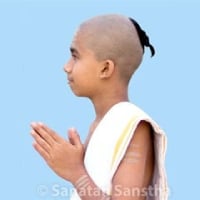 Sanskar Meaning and Definition
Sanskar Meaning and Definition Despite many births as a Human Being, why do Sanskar have to be made again ?
Despite many births as a Human Being, why do Sanskar have to be made again ?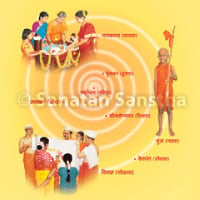 16 Sanskar – Importance and Objectives
16 Sanskar – Importance and Objectives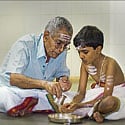 What is the aim of performing Sanskaras ?
What is the aim of performing Sanskaras ? Garbh Sanskar (Pre-birth Sanskar)
Garbh Sanskar (Pre-birth Sanskar)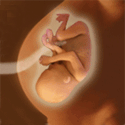 Discipline children before the child’s birth
Discipline children before the child’s birth